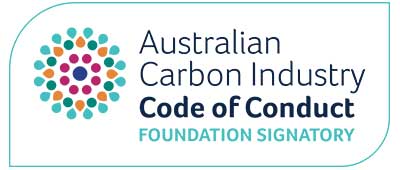Review: NSW Aboriginal Land Council guide to the CFI
The NSW Aboriginal Land Council had its foot on the gas when it published A Guide to the Carbon Farming Initiative in August 2012 – less than a year after the start of the CFI!
Overall, the guide gives local Aboriginal land councils a starting place, but I don’t think it provides the one stop shop perhaps originally intended. (Local Aboriginal land councils are the bodies that manage Aboriginal land in NSW.)
The guide makes a useful attempt to package up information on climate, the CFI and project risk all in one short guide – a fairly ambitious goal. Information is set down covering the mechanics of the CFI, project types, methodologies, additionality etc – although this information mostly replicates information that already exists on government websites – it’s not particularly contextularised for a local audience. However, there is a handy representation of permanence which shows that credits can be handed back and the land put to alternative use. A lot of people are concerned about the permanence and it’s a good one to highlight. A number of various risks are also highlighted including the uncertain market, the opportunity costs of other kinds of land use and cultural risk to traditional practices.

NSW Aboriginal Land Council Guide to the Carbon Farming Initiative
The guide gets down to local NSW Aboriginal business in the section on other legislation. The guide suggests that sequestration projects amount to a ‘land dealing’ under the NSW Aboriginal Land Rights Act 1983 (NSW ALRA) and that any local Aboriginal land council seek advice from the NSW Aboriginal Land Council (NSW ALC) before considering any carbon projects or agreements.
This may be sound advice, however, a more useful starting place may have been to outline what the land requirements are, as relevant to Aboriginal land in NSW. For example, there doesn’t seem like there is anything in the NSW ALRA preventing carbon projects on Aboriginal land. And, given a project approval does not create any interest in land, it may be that projects do not amount to a ‘land dealing’ because sequestration projects will not necessarily need to register a new carbon right on the land. Going to the NSW ALC may be sound advice but does not empower locals with all the relevant information. The guide does point out that local Aboriginal land councils will need to include carbon projects in their community land and business plans.
Going out early highlights the problem of a guide on a complex, evolving scheme – the CFI is still a developing beast and many changes have taken place since the guide was published. An alternative would be to update the online guide. Alas, details on non-Kyoto projects, funding under various streams of the land sector package and details on the carbon price are already out of date.
Thinking about how this guide might be used also highlights a broader problem: what is the strategy for CFI education for Aboriginal people? Early grants have been made to some organisations, but a coherent strategy for integrating opportunities from carbon into Aboriginal land management nationwide has yet to be developed. Maybe that will emerge when we have a settled strategy on carbon?!
Still, I’m all for proactive enlightenment on land carbon and perhaps a second run of this guide could deliver improved information for local Aboriginal land councils.























